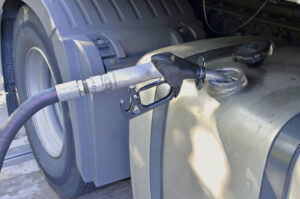Fleet management encompasses navigating the intricate landscape of compliance and technological advancements. Distinguishing between Automatic Onboard Recording Devices (AOBRDs) and Electronic Logging Devices (ELDs) is imperative for adhering to regulations and enhancing operational efficiency. This comparative analysis sheds light on the disparities between an AOBRD vs. ELD, offering insights into their respective implications for commercial vehicle operators.
Introduction to AOBRD and ELD
Initially, AOBRDs were introduced to replace paper logbooks, aiming to improve the accuracy of hours-of-service (HOS) record-keeping. ELDs, which came later, are mandated by the FMCSA to further enhance data reliability and safety on the roads. Both devices track driving hours, but ELDs offer more in terms of data collection, real-time monitoring, and compliance features.
Technical Differences
The most significant difference between an AOBRD vs. ELD lies in their technical capabilities. AOBRDs record engine use, road speed, miles driven, and date and time of day, but they offer limited data compared to ELDs. ELDs, on the other hand, automatically record additional data points like location, and identification information for the driver, vehicle, and motor carrier, enhancing compliance and oversight.
Compliance and Regulatory Impact
The ELD mandate, effective December 2017, requires most commercial vehicles to be equipped with an FMCSA-approved ELD. Vehicles equipped with AOBRDs prior to the mandate were given until December 2019 to transition to ELDs. This shift underscores the government’s commitment to ensuring safer roadways by enforcing stricter HOS compliance and data reporting standards.
Operational Benefits and Challenges
ELDs offer significant operational benefits, including reduced paperwork, real-time HOS monitoring, and streamlined compliance reporting. However, transitioning from AOBRDs to ELDs poses challenges, such as training staff on new systems and the initial investment in compliant technology. Despite these hurdles, the long-term benefits of ELDs in terms of compliance, efficiency, and safety outweigh the initial costs and efforts.
Choosing the Right Solution for Your Fleet
Selecting between an AOBRD and an ELD depends largely on your fleet’s specific needs and your compliance timeline. While the choice was mandatory by the end of 2019, fleets transitioning now should aim for ELDs due to their compliance and advanced features. When selecting an ELD provider, consider factors like system reliability, ease of use, customer support, and integration capabilities with other fleet management solutions.
At OnTrak Solutions, we specialize in providing cutting-edge fleet management and compliance solutions that cater to the unique needs of your business. We understand the critical importance of staying compliant with FMCSA regulations while optimizing your fleet’s operational efficiency. By partnering with us, you benefit from our commitment to excellence, our deep understanding of the transportation industry, and our continuous investment in technology that drives safety and efficiency.
The shift from AOBRDs to ELDs represents a significant step forward in the transportation industry’s commitment to safety, compliance, and efficiency. Understanding these differences helps fleet operators make informed decisions that align with their compliance goals and operational needs. At OnTrak Solutions, we’re here to support your journey toward a more compliant, efficient, and safe fleet operation.



